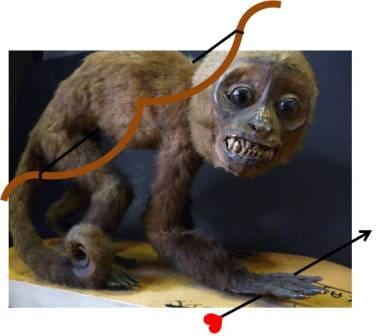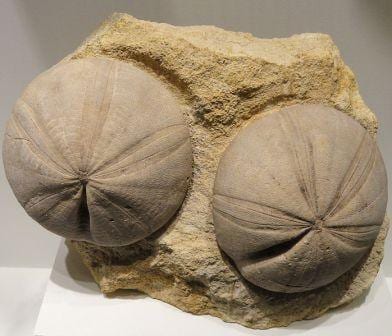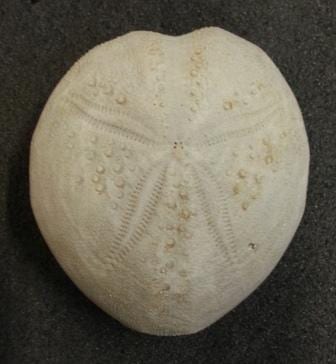Specimen of the Week: Week 122
By Emma-Louise Nicholls, on 10 February 2014
 It’s Valentine’s Day this week! I don’t subscribe to the modern idea that Valentine’s Day is a commercial farce designed to make you pay three times the price for one ‘romantic dinner’ out and 20 times the normal price for a rose of a specific colour. Well ok those are true, but Valentine’s Day doesn’t have to comprise either. Personally, I am REALLY hoping that this year someone loves me enough to get me membership to the British Arachnological Society for V-Day (link supplied in case you’re sufficiently moved, as it isn’t looking likely otherwise). But I’m not too sad as here at the Grant Museum I am surrounded by love. Such as in my choice of super lovey specimen this week! This Week’s Specimen of the Week is…
It’s Valentine’s Day this week! I don’t subscribe to the modern idea that Valentine’s Day is a commercial farce designed to make you pay three times the price for one ‘romantic dinner’ out and 20 times the normal price for a rose of a specific colour. Well ok those are true, but Valentine’s Day doesn’t have to comprise either. Personally, I am REALLY hoping that this year someone loves me enough to get me membership to the British Arachnological Society for V-Day (link supplied in case you’re sufficiently moved, as it isn’t looking likely otherwise). But I’m not too sad as here at the Grant Museum I am surrounded by love. Such as in my choice of super lovey specimen this week! This Week’s Specimen of the Week is…
1) What could be more romantic for the week of Valentine’s Day than a family of animals who’s scientific name is Loveniidae? The common name for the group to which Loveniidae belongs is sea urchin. Perhaps a well to do version of its distant cousin the street urchin?
2) The thing I love most about sea urchins is their anus. I can say that word freely as a biologist without it being inappropriate. FYI. In a regular echinoid such as Echinus the anus is on the very top of the animal’s test (the urchin name for the ‘shell’) and the mouth is at the very bottom. In the heart urchin however the anus has migrated to the back of the animal and is no longer directly above the mouth (in a North pole, South pole way). This seems to me, to be a more sensible approach to one’s anatomy.
 3) Species of heart urchin date back to the Late Eocene and they make great fossils. I’m not just saying that because I’m a palaeontologist, they are really super. Their tests have a knack of filling with sediment which provides a certain amount of strength and thus they preserve well. If you’re in the right place, the fossils are easy to find and fairly easy to interpret, making them a great tool for a day trip with the family.
3) Species of heart urchin date back to the Late Eocene and they make great fossils. I’m not just saying that because I’m a palaeontologist, they are really super. Their tests have a knack of filling with sediment which provides a certain amount of strength and thus they preserve well. If you’re in the right place, the fossils are easy to find and fairly easy to interpret, making them a great tool for a day trip with the family.
4) The urchin’s test it made of two main areas- the ambulacral plates and the interambulacral plates. Which translates as- five slices of pie radiating out from the centre (the interambulacral plates), separated by five other, thinner, pieces of pie (the ambulacral plates). We’ll call them A-plates and I-plates. The A-plates each consist of two parallel rows of holes through which little feet pop out. Each ‘foot’ is a fluid filled muscular tube. The group of these feet on each A-plate is what enables the heart urchin to get about. The feet near their mouth are used to transport food to it. presumably as they live in the water, and can therefore be guaranteed of regular baths, this shouldn’t be too much of a problem.
 5) The I-plates do not sport feet, but are just as important to the urchin. Each I-plate is covered in small bumps (see image above of the specimen). In life, each of these bumps would have supported a spine. In heart urchins these spines are particularly fine and give the heart urchin a somewhat hairy appearance. The spines vary in thickness and number between species of urchin, with some of the largest belonging to the pencil urchin. The spines often terminate in a small spatulate tip. Heart urchins burrow in the sand and the spines on the underneath of the urchin, on the same surface as the mouth, are used for both burrowing and for moving forwards. A different area of spines (at the ‘front end’, if you take the back to be where the anus is) excavates sediment whilst the underneath spines move the animal forward. The spines on the top of the urchin help to compact the burrow walls and stop the sediment from falling in on the animal.
5) The I-plates do not sport feet, but are just as important to the urchin. Each I-plate is covered in small bumps (see image above of the specimen). In life, each of these bumps would have supported a spine. In heart urchins these spines are particularly fine and give the heart urchin a somewhat hairy appearance. The spines vary in thickness and number between species of urchin, with some of the largest belonging to the pencil urchin. The spines often terminate in a small spatulate tip. Heart urchins burrow in the sand and the spines on the underneath of the urchin, on the same surface as the mouth, are used for both burrowing and for moving forwards. A different area of spines (at the ‘front end’, if you take the back to be where the anus is) excavates sediment whilst the underneath spines move the animal forward. The spines on the top of the urchin help to compact the burrow walls and stop the sediment from falling in on the animal.
Emma-Louise Nicholls is the Curatorial Assistant at the Grant Museum of Zoology
One Response to “Specimen of the Week: Week 122”
- 1
 Close
Close



So Micraster, the heart shaped sea urchin found in large numbers in the Cretaceous Chalk, is not in this group? Does this mean that heart-shaped-ness evolved more than once? Maybe the anus really is better off at the back rather than on the top. Ooer.